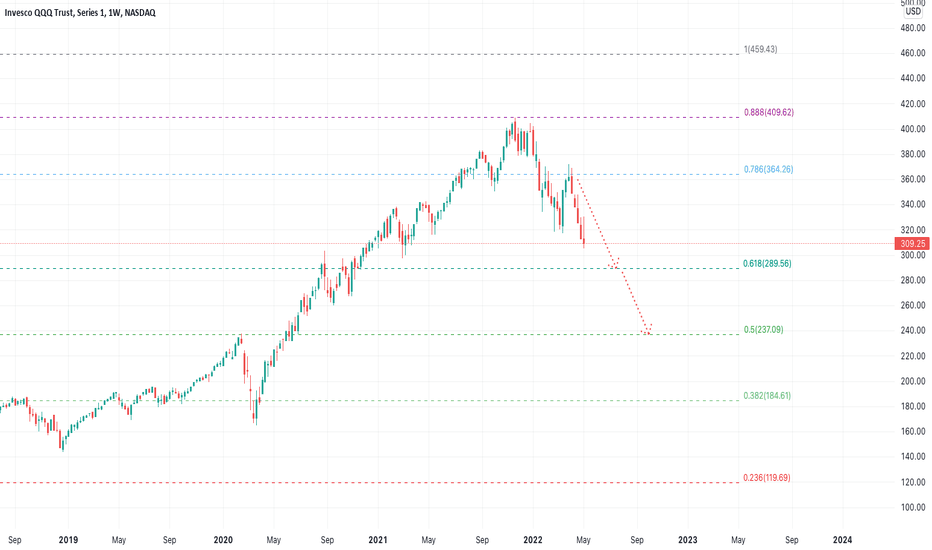The financial markets are a complex ecosystem, with various instruments and indices that investors navigate to optimize their portfolios. Among these, the Invesco QQQ Trust (QQQ) stands out as a popular and influential exchange-traded fund (ETF). In this article, we delve into the intricacies of QQQ stocks, exploring their history, composition, performance, and the factors that make them a compelling investment option.
-
Table of Contents
ToggleThe Genesis of QQQ:
The QQQ ETF traces its roots back to the launch of the Nasdaq-100 Index in 1985, a benchmark that represents the performance of the largest non-financial companies listed on the Nasdaq Stock Market. The ETF was introduced by Invesco in 1999, providing investors with an opportunity to gain exposure to high-growth technology and internet-related companies.
-
Composition and Sector Allocation:
Understanding the composition of the QQQ is crucial for investors aiming to decipher its performance. The ETF comprises 100 of the largest non-financial companies listed on the Nasdaq Stock Market. Notably, technology stocks dominate the portfolio, accounting for a significant portion. Prominent holdings include tech giants like Apple, Microsoft, Amazon, and Google’s parent company, Alphabet.
While the technology sector is a major player, the QQQ is not solely focused on tech stocks. It also includes companies from sectors like consumer discretionary, healthcare, communication services, and more. This diversification aims to mitigate the risk associated with being overly concentrated in a single industry.
-
Performance Analysis:
The QQQ has been a stellar performer over the years, reflecting the growth of the technology sector. Investors often turn to this ETF for exposure to companies at the forefront of innovation and digital transformation. Historical data reveals consistent outperformance, making it an attractive choice for those seeking capital appreciation.
The ETF’s performance can be attributed to the robust growth of its constituent companies, many of which are disruptors in their respective industries. The rise of e-commerce, cloud computing, artificial intelligence, and other technological advancements has propelled the QQQ to new heights.
However, it’s essential to note that past performance does not guarantee future results. Investors should conduct thorough research and consider various factors, including market conditions and economic indicators, before making investment decisions.
-
Risks and Challenges:
While the QQQ offers exposure to high-growth companies, it is not immune to risks and challenges. The technology sector can be volatile, influenced by factors such as regulatory changes, geopolitical tensions, and shifts in consumer preferences. Moreover, the concentration of the QQQ in certain stocks exposes investors to the specific risks associated with those companies.
Market downturns can also impact the QQQ, as seen during periods of economic uncertainty. It is crucial for investors to assess their risk tolerance and diversify their portfolios to mitigate potential losses.
-
Dividends and Income Generation:
Unlike some traditional dividend-focused ETFs, the QQQ is not known for its high dividend yield. The emphasis on growth means that many of its constituent companies reinvest their profits into research, development, and expansion rather than distributing them to shareholders. Investors seeking income generation through dividends may find other ETFs more suitable for their objectives.
-
QQQ and Market Trends:
The QQQ is often viewed as a barometer of market sentiment, particularly in the technology sector. Trends in the ETF’s performance can signal broader market movements and investor sentiment. Analysts and traders closely monitor the QQQ as part of their technical analysis, using it to gauge the health of the overall market.
-
The Influence of Big Tech:
The dominance of major technology companies in the QQQ has raised concerns about their impact on market dynamics. The outsized influence of a few large-cap stocks can lead to increased market correlation, where the performance of these stocks heavily influences the overall movement of the QQQ. This correlation poses challenges for investors looking to achieve true diversification in their portfolios.
Conclusion:
The Invesco QQQ Trust is a dynamic and influential ETF that has played a pivotal role in providing investors with exposure to some of the world’s leading companies. Its focus on high-growth sectors, particularly technology, has resulted in impressive historical performance. However, investors must carefully consider the associated risks and challenges, including sector concentration and market volatility.
As with any investment, thorough research, diversification, and a clear understanding of individual financial goals are paramount. The QQQ’s journey reflects the ever-evolving landscape of the financial markets, and its future performance will undoubtedly be shaped by the continued innovation and disruption within the technology sector and beyond.

